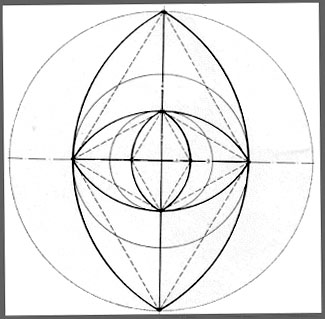 A nice fat stack of these slick mailers just arrived via snail mail announcing the Northern California Visionary Art show that I will part of at the Grace Hudson Museum in Ukiah, California. I was impressed with the quality and pleased to see Illumination reclining in ease and prominence. (It is originally a tri-fold jobbie that I condensed here for posting) The copy reads:
A nice fat stack of these slick mailers just arrived via snail mail announcing the Northern California Visionary Art show that I will part of at the Grace Hudson Museum in Ukiah, California. I was impressed with the quality and pleased to see Illumination reclining in ease and prominence. (It is originally a tri-fold jobbie that I condensed here for posting) The copy reads:
In the late 1960s the San Francisco Bay Area became the focal point for a new art movement labeled Visionary Art. It materialized against a background of Vietnam War protests, campus riots, a new idealistic counterculture, Far Eastern spiritual influences, underground comics, psychedelic music and poster art. It was a time of mind altering drug experimentation and free love. Massive numbers of youth were fleeing their middle class upbringing to seek other paths of consciousness and utopian dreams. Concepts of ecology and a back to the land movement were beginning to flourish. The first television generation was seeking new realities.
A nucleus of artists developed on this wave of rising consciousness. They were influenced by Surrealism, Jungian universal archetypes, personal dream awareness, ancient art symbols, and non-Western religious philosophies. These Visionary Artists expressed new alternate realities in their detailed dream-like images.
This exhibition germinated from the large number of Visionary Artists who are now located in rural Northern California. This selection of works follows the traditions of personal dreamscape, utopian landscape, spiritual awakening and apocalyptic visions as originally manifested in early California Visionary Art. Both original and recent artworks by some of the founders of this movement are represented. Also included are paintings by artists who have immigrated here from afar or are younger painters who represent a second Visionary Art generation.
It is clear from the powerful artwork that California Visionary Art remains an important contemporary, creative and idealistic force.It continues to offer alternative spiritual realities and serves as an ecological conscience, even a seer
of doom, for the competitive materialistic world. For all, Visionary Art offers a plethora of intriguing epiphanies to ponder.
Marvin Schenck, Curator
Grace Hudson Museum




